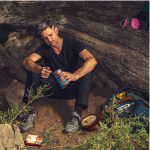This tale of lifting one heavy cognitive load come from Roger Dooley’s post “Don’t Redesign Your Elevator!” on his Neuromarketing blog. It describes his first encoutnter with a Schindler ID System Elevator control installation in an modern German hotel. “Each new guest had to be walked to the elevator for a training session on how to get to one’s floor.”
The elevators are arranged in a circle around a little lobby—very attractive and ultra-modern. To get inside the elevator lobby from a guest floor, though, I have to get through a heavy glass door. It’s locked. Maybe to prevent a cat burglar who rappelled to the 28th floor, broke in through a window, and now planned to make a quick exit via the elevator? I wave my RFID room key at various objects to no effect. Finally, I notice on the wall opposite the door handle there’s a button that says “unlock door.” I push it, and quickly open the door. (I guess the cat burglar could have pushed the button too. Hmmm. Maybe its purpose is to keep really short people away from the elevators?)
The elevator lobby has none of the traditional “up” or “down” buttons. Rather, there’s a little kiosk with a keypad and a display. To use the keypad, though, you have to swipe your room key next to a sensor. But where’s the sensor? There’s no label, nothing to indicate which spot you have to get close to—I figured it out by watching a bellhop do it. There’s no beep or other feedback when you identify yourself to the elevator brain—you know it worked only if you can use the keypad.
Once the elevator brain decides you have authorization to request an elevator, you key in the number of your destination floor. The display gives you a letter code for your assigned elevator. When you enter the car, you find no floor buttons at all. Your pre-selected floor is displayed on a little panel by the door. Don’t even think about, say, stopping at the reception floor once you’ve boarded—you made your decision at the kiosk, and any itinerary changes will have to wait until arrive at your programmed destination.
Oddly, even exiting the elevator lobby requires a key card. Since activating the kiosk requires one too, if you somehow got into the lobby without a card (say, if you went in as someone was leaving), you’d apparently be trapped.
While the idea of a programmable elevator system certainly has appeal from a security standpoint, the complexity it presents to hotel guests doesn’t seem worth the payoff. Sometimes it really is better to keep things simple, so long as you don’t make simple mistakes like this one sent in by Kevin Cropper, showing a panel with the same open-door icon used next to the door open and door close buttons.
Keep these coming. Send them to us via Twitter or Facebook using the hastag #wtfUX or email them to: [email protected] with “#wtfUX” in the subject line. Include as much context as you can, so we get a full understanding of what the f%*k went wrong.









